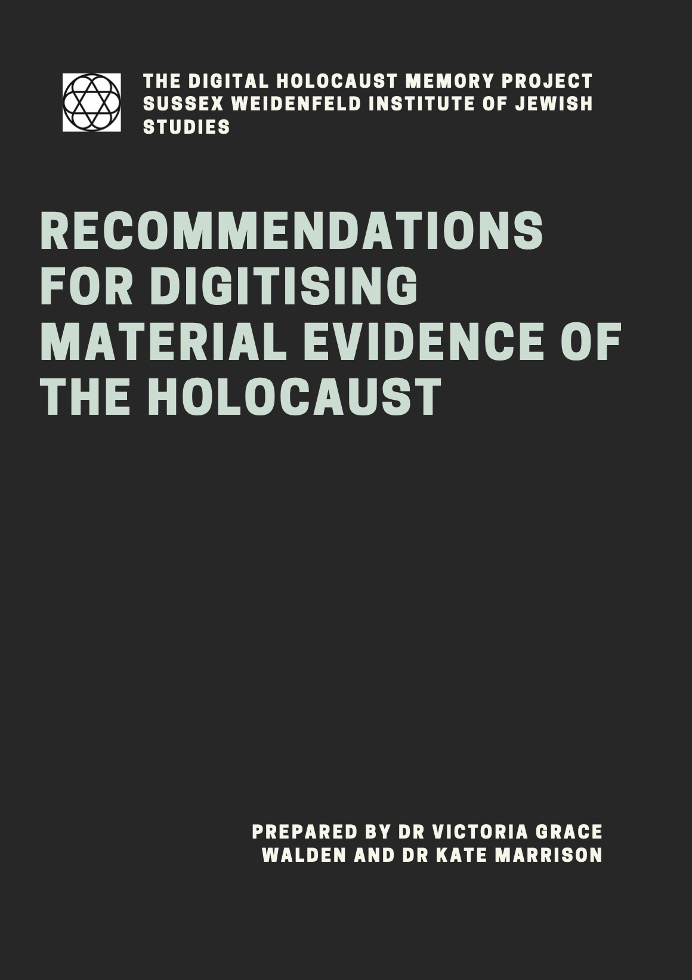
Recommendations for Digitising Material Evidence of the Holocaust
The recommendation reports, published as part of the Digital Holocaust Memory Project, underpin the objectives of the Landecker Digital Memory Lab. Their findings feed into all of the work that we now do.
Foreword
Holocaust collections are becoming increasingly digitised. Whilst digitisation offers many opportunities, especially in terms of preservation and public access to material evidence of this past, it nevertheless also introduces new challenges for Holocaust heritage. Digital technologies offer the potential for more networked connections between institutions, this is not always easy. There is a lack of consistency in vocabularies used for metadata, national and supranational laws affecting digital dissemination differ across the world, and there is unevenness across the sector in terms of resources (time, technological, and human) that can be dedicated to digitisation projects, and digital literacies and capacities.
Despite the public misconception that ‘the Nazis left little evidence of their crimes’, there are large swathes of historical documents and objects that testify to the violences enacted during the Holocaust. The Arolsen Archives, alone, has more than 50 million reference cards and 30 million documents from concentration and forced labour camps, and files on displaced persons. Beyond contemporary evidence of the Holocaust, there are substantial collections of victim, witness, and occasional perpetrator testimony recordings.
Beyond those with a professional understanding in digitisation, it also reminds a somewhat ambiguous process. Few people who engage with digitised copies of material evidence of the Holocaust at onsite archives or online, really understand what digitisation involves. This is also often true of those responsible for small or private collections, as has been anecdotally expressed to me by such people during my own research. How do we support owners of such collectors to ask the right questions when budgeting, fundraising, and employing colleagues to take on this work in ethical ways appropriate to the management of the sensitive material we find in Holocaust collections? How can we make the mammoth work of digitising material evidence of the Holocaust a collaborative project when so many inconsistencies, legal frameworks, and resource issues stand in the way? Do we need to digitise all material evidence of the Holocaust to ensure its preservation as evidence or do digitising strategies need to be more modest (for example, focusing on those sources most useful for public dissemination)? What are the consequences of adopting one of these approaches over the other? These are the types of questions which demonstrate that an interdisciplinary, international forum was needed to consider both the state-of-play and possibilities to improve practice for the future.
This report serves as an important first step in this work. It was created as part of the research project ‘Participatory Workshops – Co-Designing Standards for Digital Interventions in Holocaust Memory and Education’, which is one thread of the larger Digital Holocaust Memory Project at the University of Sussex. The participatory workshops project has focused on six themes, each of which brought together a different range of expertise to discuss current challenges and consider possible recommendations for the future.
The themes were:
- AI and machine learning
- Digitising material evidence
- Recording, recirculating and remixing testimony
- Social media
- Virtual memoryscapes
- Computer games
Download the full report below:
Digitising-Material-Evidence-Guidelines